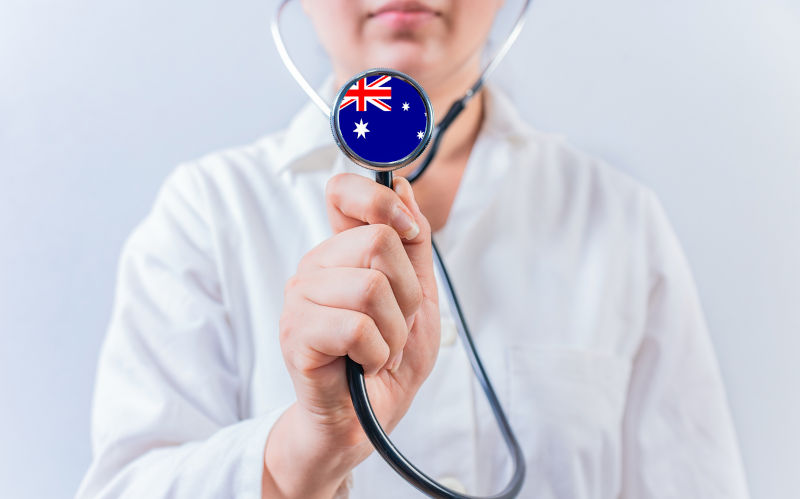Achieving health equity in Australia
July 7, 2025
The recently launched World Report on the Social Determinants of Health Equity, by the World Health Organisation (WHO, 2025), paints a stark picture of the differences in ill-health, poor well-being, disease and mortality within and between countries, that arise from unfair and avoidable social conditions.
This comprehensive report was requested by resolution at the World Health Assembly in 2021, attended by 194 member states. The report reflects on progress since the WHO Commission on the Social Determinants of Health (2008) recommended action to improve daily living conditions; tackle inequitable distributions of power, money and resources; and to measure and understand persistent inequities and assess the impact of current action.
Sadly, the 2025 WHO reports that insufficient progress has been made over the past 17 years. Some profound inequities within Australia are referenced in the new World Report:
- “The gap in life expectancy between the Indigenous and non-Indigenous population is […] 10 years for Indigenous Australians.” (p. 12)
- “In Australia, men who had not completed secondary school had an age-adjusted mortality rate of 102 per 10 000 person-years – 2.2 times higher than the rate for men with university degrees (46.3 per 10 000 person-years). For Australian women, the difference in age-adjusted mortality was 60% between those with the highest and lowest education levels (46).” (p. 14)
- “[…] in Australia, Aboriginal and Torres Strait Island mothers are up to three times more likely to die during childbirth than non-Indigenous women (62).” (p.16)
The Report also highlights the important efforts of Aboriginal Community Controlled Health Services (p. 130), truth-telling processes in Victoria (p. 82), and improvements to Aboriginal health associated with restoring land rights (p. 98).
Following the release of the Commission’s report in 2008, the Australian Senate at the time initiated a process to respond to the WHO Commission on Social Determinants of Health report “Closing the gap within a generation”. The Senate Community Affairs Committee, charged with this inquiry, received 68 submissions from a broad range of stakeholders with an interest in this topic. In 2013, the Committee made five recommendations. However, we were saddened to read in 2024, no government response was ever provided.
This new WHO World Report recommends four interlocking strategies to make a lasting contribution to addressing social determinants of health equity:
- Addressing economic inequality and investing in social infrastructure and universal public services.
- Overcoming structural discrimination(s).
- Managing the challenges and opportunities posed by the mega-trends of climate change and the digital transformation in a way that systematically promotes health equity.
- Putting in place governance arrangements that will maximise the coherence and impact of action.
Recently, our team at Stretton Health Equity at the University of Adelaide wrote to the prime minister and the minister for Health, Disability and Aging to highlight this critical and timely opportunity to prioritise action on the social determinants of health equity. We urged our leaders to take up the five recommendations that the Senate Community Affairs Committee made in 2013, which are still relevant. That is:
- The government adopt the WHO Report and commit to addressing the social determinants of health relevant to the Australian context.
- The government adopt administrative practices that ensure consideration of the social determinants of health in all relevant policy development activities, particularly in relation to education, employment, housing, family and social security policy.
- The government place responsibility for addressing social determinants of health within one agency, with a mandate to work with other sectors to address issues across portfolios.
- The NHMRC and MRFF give greater emphasis in its grant allocation priorities to research on public health and social determinants research.
- An annual progress report to parliament be a key requirement of the body tasked with responsibility for addressing the social determinants of health.
Health inequities have increased in Australia over recent decades, in line with worsening socioeconomic inequality. A fair go for all should be the aim of public policy, and prioritising equity across multiple sectors strongly resonates with current National Preventive Health Strategy goals that all Australians have the best start in life; live in good health and wellbeing for as long as possible; health equity is achieved for priority populations; and investment in prevention is increased (Department of Health 2021).
The prime minister and treasurer have made it clear that boosting productivity is a priority goal for Australia. Actions to improve health equity can make significant contribution to productivity. The WHO estimates that improved health equity could save Australia $6.5 billion AUD annually (WHO, 2025, p. 38). Supporting equitable health outcomes will therefore improve the health of Australians already most vulnerable, promote productivity, and enable efficiency for resources that can be reinvested in the wellbeing of all Australians.
The government’s implementation of Australia’s first national well-being framework, Measuring What Matters (2023) are commended. However, to progress the well-being agenda for all Australians, we urge the government to make health equity a key indicator of national progress, and to determine how it can respond to the WHO World Report on the Social Determinants of Health Equity.
Stretton Health Equity team members:
- Professor Fran Baum
- Assoc Professor Toby Freeman
- Dr Julia Anaf
- Dr Matt Fisher
- Dr Joanne Flavel
- Kristen Foley
- Dr Connie Musolino
- Dr Miriam van den Berg
The views expressed in this article may or may not reflect those of Pearls and Irritations.
